Law firms sit on a treasure chest of confidential documents, trade secrets, health records and criminal proceedings. Losing control of that data can destroy a firm’s reputation overnight, yet the legal industry often relies on aging systems, siloed practices and billable-hour pressures that push cybersecurity to the back seat. Threat actors have noticed. Over the past two years ransomware crews have shifted focus toward professional-services organizations because the payoff is high, the technical defenses are uneven and the urgency to restore business operations makes firms more likely to pay.
This in-depth guide unpacks seven ransomware trends that now dominate the legal threat landscape, showing how each technique works, why it is so effective against attorneys, and what practical defenses a New Orleans–area managed IT provider can deploy to protect practitioners from Baton Rouge to the French Quarter.
1) Double extortion replaces pure encryption
Early ransomware campaigns merely scrambled files and held decryption keys for ransom. Today most attacks add a second layer: before encrypting, the malware quietly siphons terabytes of matter management databases, executive email chains and deposition recordings to offshore servers. Attackers then threaten to publish or auction that data if the firm refuses to pay. For law practices confidentiality is not just a courtesy; it is an ethical obligation enforced by state bar associations and federal privacy statutes. The potential exposure of client-attorney privilege or sealed court records applies white-hot pressure to settle.
Mitigation demands airtight outbound data controls, not just perimeter firewalls. Deploy data loss prevention scanning on endpoints and cloud drives, monitor for sudden bulk file access and encrypt sensitive archives at rest. Incident-response playbooks must anticipate publicity blackmail and coordinate with public-relations counsel long before an emergency occurs.
2) Ransomware-as-a-service commoditizes attacks
The criminal ecosystem now mirrors legitimate software distribution. A core developer builds the encryption engine and rents it to “affiliates” who specialize in phishing, exploit kits or network intrusion. Each affiliate keeps a percentage of the payout and hands the rest to the developer. This franchise model raises both the quantity and the sophistication of attacks because specialists can focus on their niche while reusing proven code. It also means small regional firms are no longer beneath the radar; affiliates blast thousands of targets looking for a single vulnerable remote desktop port or misconfigured SharePoint site.
Defense depends on reducing the attack surface through zero trust policies, mandatory multi-factor authentication and continuous vulnerability management. Contractual language in vendor agreements should require timely patching of any managed service that connects to firm networks because a compromise upstream can cascade quickly under the service model.
3) Supply chain infiltration moves upstream
Legal practices rely on software for timekeeping, e-discovery, document comparison, IP phone systems and cloud case-management portals. Many of those vendors are boutique developers with modest security budgets. Attackers inject malicious updates or steal vendor credentials, then deliver ransomware through a channel the firm inherently trusts. Kaseya, SolarWinds and other headline incidents taught criminals that compromising one provider can yield hundreds of victims in a single stroke. The legal sector’s complex partner web—expert witnesses, contract reviewers, litigation support bureaus—magnifies the blast radius.
To reduce risk, firms must adopt a formal vendor risk management program that scores partners based on data sensitivity and requires third-party assessments, penetration test summaries and incident-notification timelines. Network segmentation isolates vendor systems from client matter repositories, and application allow-listing prevents unsigned code from running even if a supply-chain update enters the environment.
4) Intermittent encryption accelerates time to ransom
Classic ransomware opened every file in sequence and encrypted it fully, which left a trail of disk activity that could trigger behavioral detection or allow defenders to halt the process midstream. New variants encrypt only strategic segments of large files—say every tenth megabyte—or scramble header sections that render documents useless while consuming a fraction of the time. Fast lockdowns shorten the window for reactive defenses and give victims less ability to isolate affected shares. Legal repositories filled with massive PDF bundles and trial exhibits make prime targets because attackers can disable access in minutes.
Endpoint detection and response platforms should monitor not just total disk writes but patterns of partial overwrites across diverse directories. Immutable snapshots on file servers can roll back targeted files instantly without needing full system restores. Retaining frequent snapshots for at least thirty days guards against slow-burn intrusions that detonated weeks after infiltration.
5) Malicious use of legitimate remote tools
In many law offices partners demand remote desktop access to case files while traveling for depositions or conferences. Threat actors exploit that convenience by hijacking legitimate administration utilities like PowerShell, PsExec or vendor help-desk agents. Because those binaries are signed and commonly whitelisted, traditional antivirus solutions let them pass. Once inside, criminals disable backups, locate privileged file shares and run the ransomware payload under the radar.
Zero trust network access platforms limit remote sessions to specific applications instead of the whole desktop and validate device posture before connection. Privileged access management vaults rotate local administrator passwords, preventing lateral movement with stolen credentials. Regular reviews of remote-access logs can reveal suspicious midnight sessions or repeated failed logins that precede manual ransomware deployment.
6) Encryptionless extortion focuses on reputational damage
Some crews skip encryption entirely. They steal confidential data and demand payment while threatening to leak it. Because operations continue unhindered, detection relies on noticing the exfiltration itself, and victims cannot restore from backup to escape the threat. For a litigation team handling high-profile mergers or criminal cases, public disclosure may be catastrophic.
Solutions include outbound anomaly detection, strong file-integrity monitoring and tokenized data. The firm’s crisis-communications policy should cover scenarios where attackers contact journalists directly. Having prebuilt breach-notification templates aligned with Louisiana’s data-breach statute and ABA ethics opinion guidelines accelerates compliance and reduces panic.
7) Professional service impersonation and spear phishing
Attackers study social media, press releases and court calendars to craft emails that reference ongoing cases or newly filed dockets. A managing partner might receive a message that appears to come from opposing counsel, complete with accurate case numbers and local court seals. The email urges opening a “revised settlement proposal” which is in fact a macro-laden document that drops ransomware. These spear-phishing campaigns exploit the urgency and precision familiar to litigators who routinely exchange last-minute filings.
Combatting impersonation requires layered controls: AI-based email gateways that evaluate language tone, company-wide phishing simulations and mandatory out-of-band verification for file exchanges with unfamiliar parties. Digital rights management tools can embed legal watermarking and secure viewer technology so staff can preview files in isolation rather than download raw attachments.
Why the legal sector is uniquely vulnerable
Confidential data is invaluable, uptime is non-negotiable when court deadlines loom, and decentralized partnership structures often blur accountability for IT decisions. Firms also depend on a patchwork of legacy applications that integrate through file shares, which makes segmentation difficult. Smaller practices may outsource all IT but never request a penetration test, assuming vendors cover everything. Meanwhile threat intelligence shows a steady rise in dedicated leak sites naming legal victims, signaling that criminals view the industry as low-hanging fruit with high payout potential.
Building a defense-in-depth strategy that fits the billable-hour world
Conduct a formal risk assessment that maps every data store, practice management platform and third-party link. Quantify both the direct cost of downtime and the reputational cost of exposure.
Implement zero trust principles starting with multi-factor authentication on email, VPN, remote desktop and cloud portals. Lawyers often resist additional steps, so choose push notifications or hardware tokens that minimize friction.
Harden backups with immutability and isolation. Store copies in a separate cloud subscription or offline vault so attackers cannot delete them after breaching production accounts.
Adopt continuous security monitoring that merges endpoint telemetry, firewall logs and SaaS alerts into a managed detection and response platform staffed 24×7.
Schedule tabletop exercises twice a year that involve partners, IT staff, marketing and outside counsel. Simulate both encrypted shutdown and data-leak blackmail to test communications flow and decision authority.
Negotiate cyber insurance with clarity. Insurers now require proof of controls; in return they offer incident-response retainers and forensics. Review policy language about ransom payment limits and legal counsel reimbursement so surprises do not surface during crisis.
Educate every employee. Monthly bite-size training beats annual marathon sessions. Spotlight recent industry breaches and share sanitized real-world phishing attempts observed in your own environment.
A Louisiana-centric perspective
Hurricane season forces law offices to plan for sudden remote work, which ironically creates fresh attack vectors through hurried VPN deployments or ad hoc home devices. Local regulations demand breach notices within sixty days, and Louisiana attorneys must also respect ABA Model Rule 1.6 on safeguarding client information. A New Orleans managed IT provider familiar with parish court systems and state ethics opinions can tailor controls to these realities, ensuring cybersecurity aligns with evacuation planning and regional compliance.
Looking ahead
Ransomware innovators will keep probing the legal sector because privilege, confidentiality and strict filing deadlines amplify leverage. Expect artificial intelligence to craft even sharper phishing lures referencing PACER filings minutes after they post, and watch for cross-platform ransomware that hits Windows and MacBooks simultaneously since many partners prefer macOS. Firms that treat cybersecurity as an equal partner to case law research will thrive; those that defer upgrades or training will eventually face an extortion countdown timer.
A layered defense anchored by zero trust authentication, immutable backups, vendor risk governance and relentless employee awareness can blunt most modern ransomware tactics. Partnering with a managed service provider that understands both regional threats and the nuanced pressures of legal practice yields the greatest return, delivering resilient operations, protected client trust and a competitive edge in a profession where reputation is everything.


